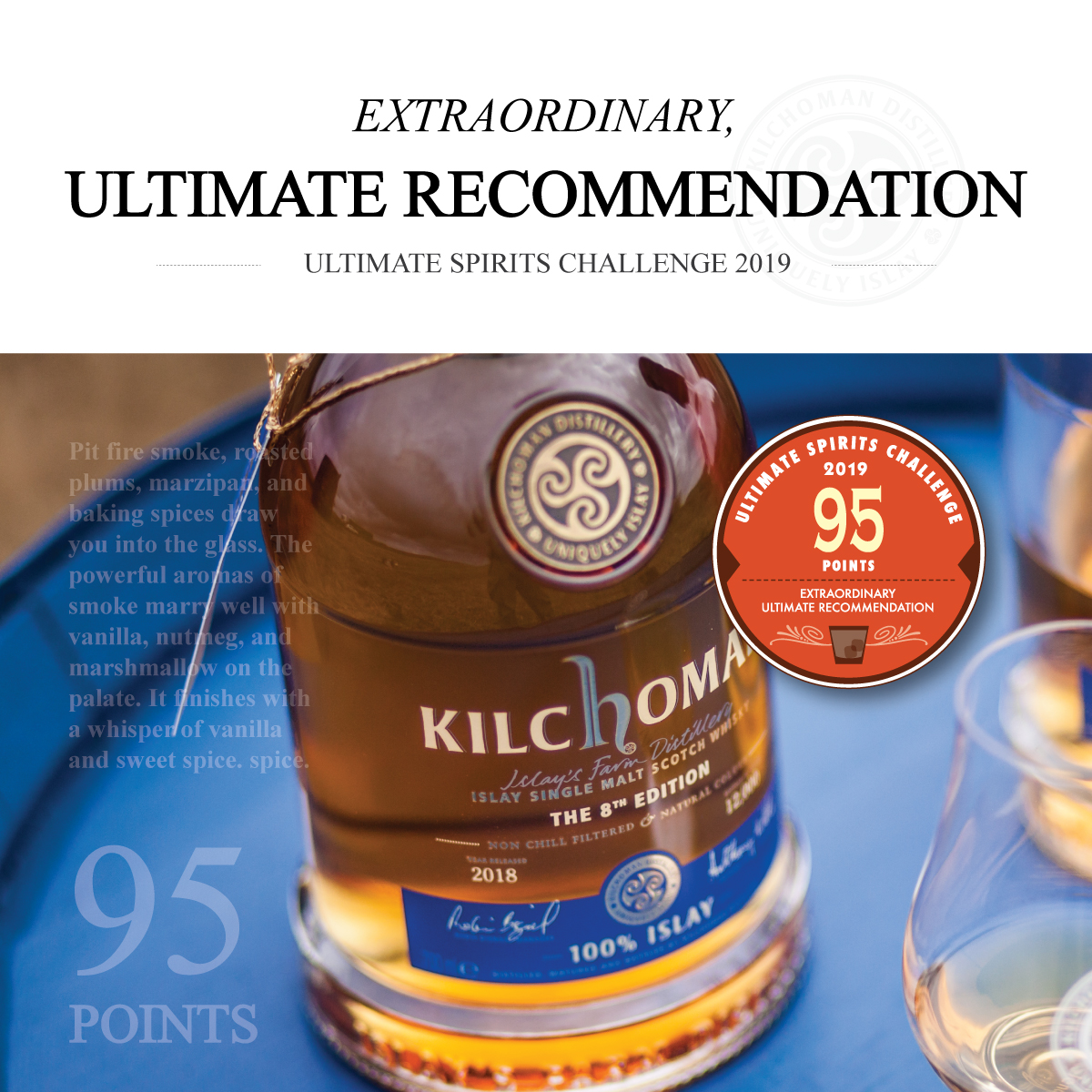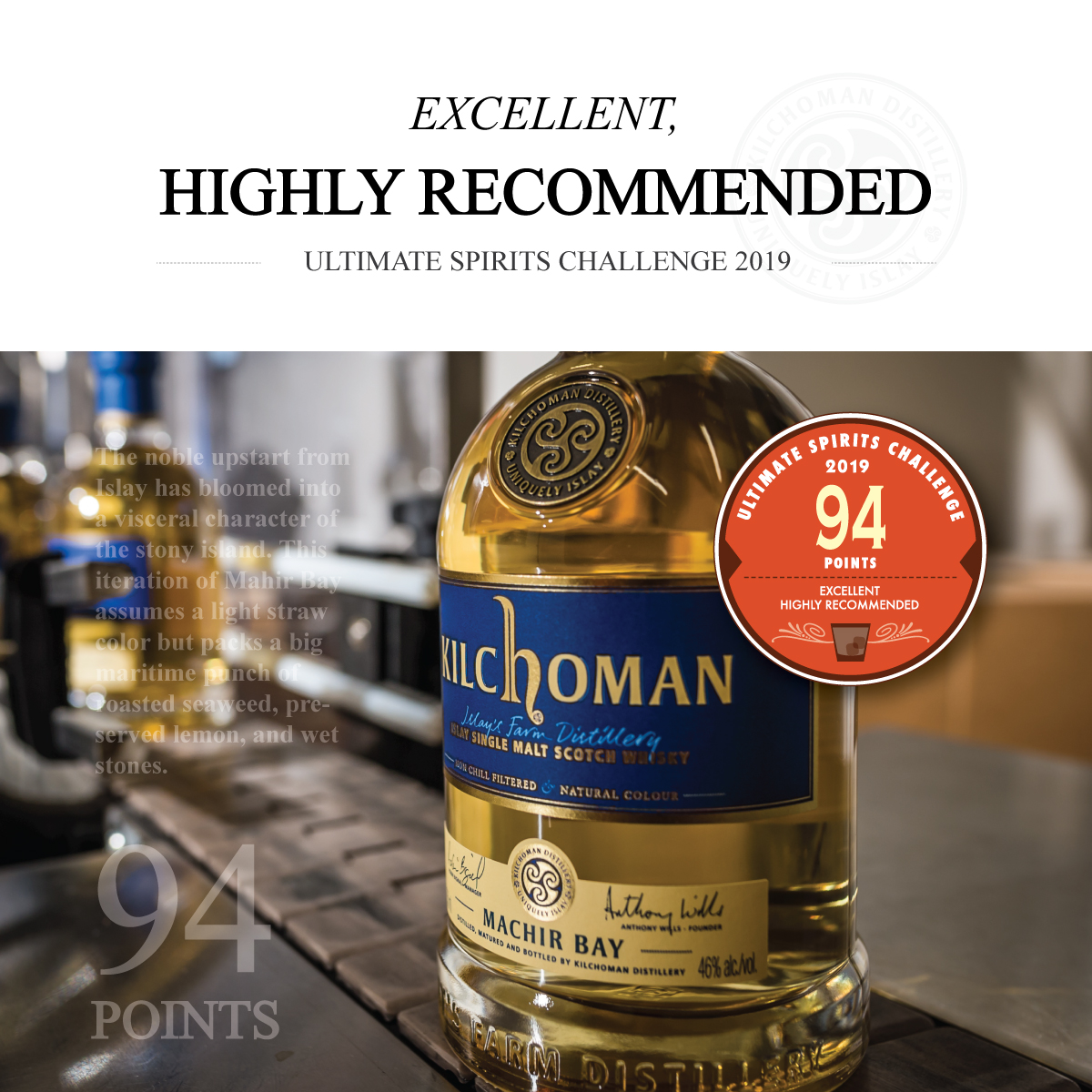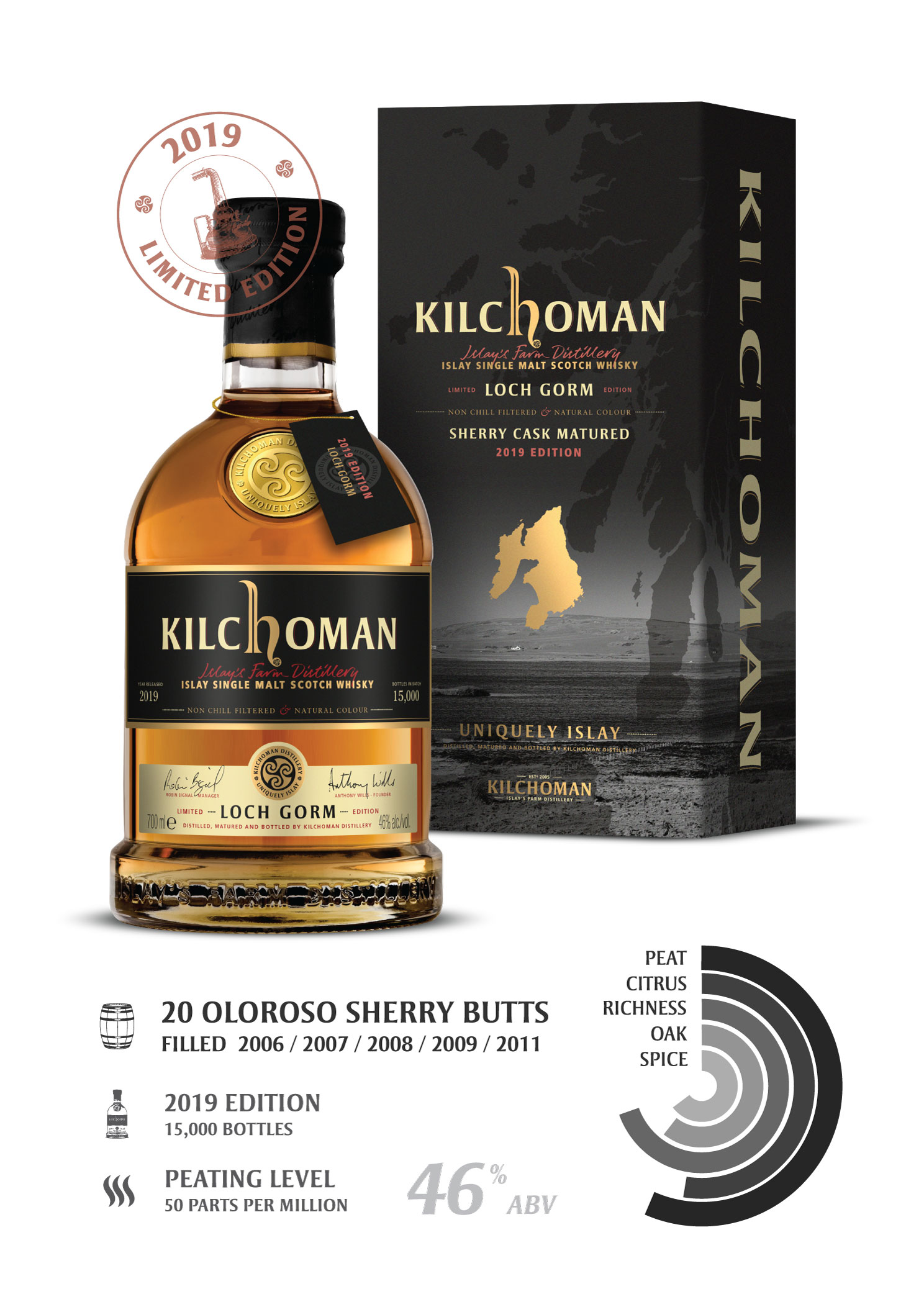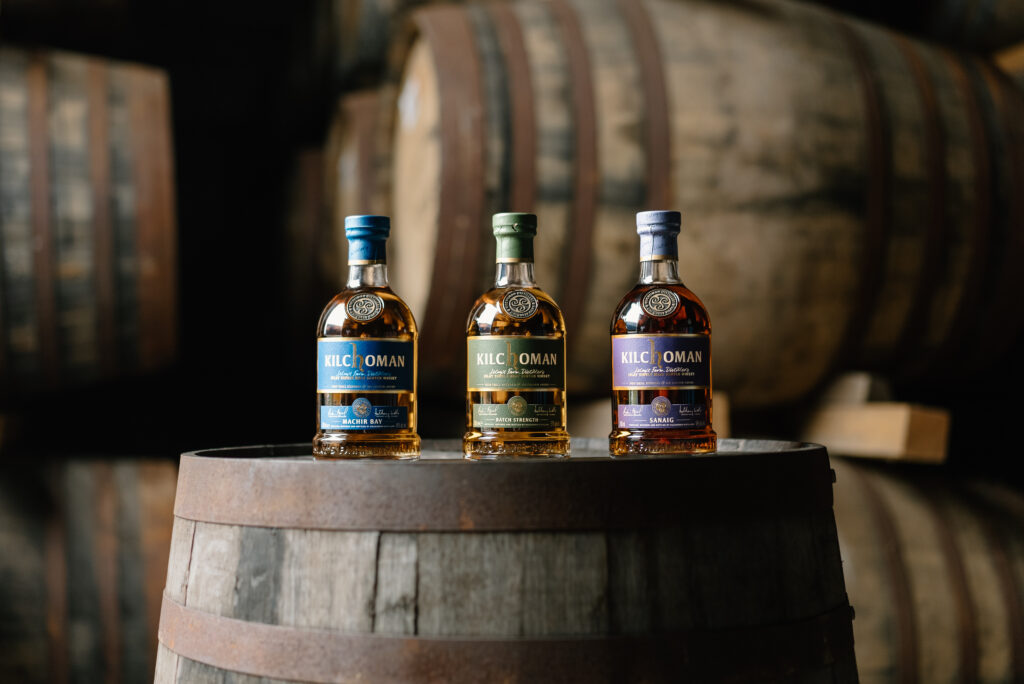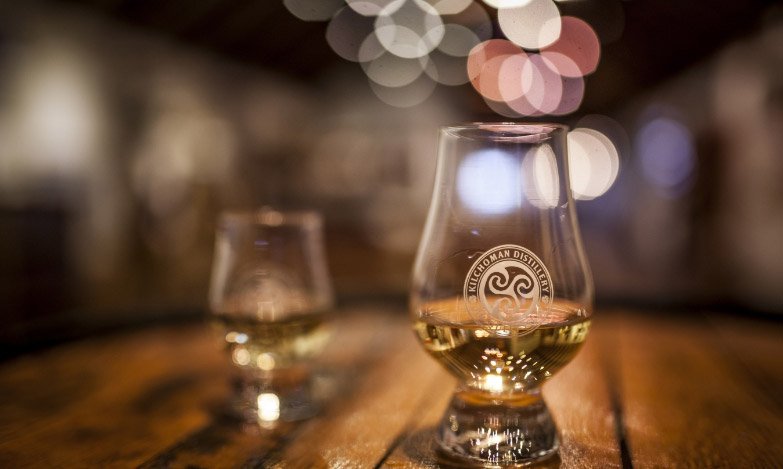Our Feis Day plans are coming together nicely, here’s a brief rundown of everything that’s going to make Kilchoman Feis 2019 our best ever!

Bookable Events, Tours and Tastings; we have a range of events that can be booked in advance of our Feis Day, click here for full details and availability.
- 11am – Founder’s Casks Masterclass with Anthony Wills, Kilchoman Founder
- 12.30pm – New Make Masterclass with Robin Bignal, Production Manager
- 2pm – Wills Bros Cask Selections with George, James and Peter Wills
- 10am, 12.30pm & 3pm – Islay’s Farm Tour with Islay Heads, General Manager
- 2pm & 3pm – Perfect Pairings with Whisky Chef Martine Nouet
- 9.30am, 11am – Be a Bottler (includes a specially labelled bottle of Machir Bay)
- 12.30, 2pm & 3.30pm – Ultimate Be a Bottler (includes a specially labelled bottle of Distillery Exclusive)

Explore; all our major production areas will be open and operational throughout the day, these include;
- Open Still House – chat with the still house team, take a look at our two new stills and try some of the fabled Kilchoman New Make spirit.
- Malt Floor – discover the ancient art of floor malting, try turning the malt yourself and enjoy a dram of 100% Islay on us.
- Warehouse No 1 – explore our traditional dunnage warehouses, take a picture with Cask No1 and enjoy a nip of Machir Bay.
- Barley Fields – you can take your pick of fields to explore we have about 400acres to explore. We’d recommend the Stone Cottage Field (first on your left after the Kilchoman sign) we’ve sown our two 2019 barley varieties, Concerto and Sassy, side by side.
Eating, Drinking, Dancing and Shopping
- The Whisky Bar will be serving endless supplies of Kilchoman limited editions, Comraich batches and cask samples.
- 4 Dram Tastings – learn more about Kilchoman and our whiskies with an informal 30min tasting lead by one of the team. Book on the day at the 4 Dram Tasting area (see map/program).
- Blend Cocktail Bar – our friends from Blend WhiskyBar in Castelfranco, Italy, have created a range of mixed drinks which will be available from the cocktail trailer throughout the day, fingers crossed for cocktail weather!
- There will also be three bands playing throughout the day in the Music Marquee, local meats served from the BBQ, light bites from the Salad Bar, cakes and coffees from the Café and all the branded gear you could ever want from the Gift Shop.

Whisky Shop
The whisky shop will be open from 10am stocking all of our recent limited editions, latest distillery exclusive single cask; a nine year old bourbon barrel and of course our exclusive Feis Ile bottling.
Feis Ile Bottling
Anthony is still finalising his cask selections for this year’s Feis Bottling, we can’t confirm anything yet but it’s looking likely to be a vatting of two 11 years old casks at cask strength. The Feis Bottling will only be available from the distillery on Thursday May 30th limited to one bottle per person. Exact details will be announced soon.
We look forward to seeing you all and enjoying another great Kilchoman Feis Day!
We are pleased to announce that 100% Islay 8th Edition and Machir Bay were awarded fantastic scores of 95 and 94 points respectively in the Ultimate Beverage Challenge 2019.
Judge’s Tasting Notes, 100% Islay: Pit fire smoke, roasted plums, marzipan, and baking spices draw you into the glass. The powerful aromas of smoke marry well with vanilla, nutmeg, and marshmallow on the palate. It finishes with a whisper of vanilla and sweet spice.
Machir Bay: The noble upstart from Islay has bloomed into a visceral character of the stony island. This iteration of Machir Bay assumes a light straw colour but packs a big maritime punch of roasted seaweed, preserved lemon, and wet stones.
A link to full results is in our bio. Results Islay Single Malts – https://www.ultimate-beverage.com/ultimate-spirits-challenge-USC/2019-spirits-results/?type=101&subtype=886&product_name=&country=&award=
Loch Gorm is our annually released sherry matured limited edition. The loch, murky and peaty in colour, reflects the dark coppery tone of the sherry matured Loch Gorm release.
As the only release in our range to be fully matured in sherry casks (from filling to bottling), Loch Gorm has always attracted special attention from whisky fans, especially given that just 15,000 bottles will be released.
Loch Gorm has been evolving over the years, each new edition containing a different combination of casks. This year Anthony has selected twenty oloroso sherry butts from 2006, 2007, 2008, 2009 and 2011, meaning that for the first time Loch Gorm will contain 12 and 13 year old casks.
“It has been fascinating to see first-hand how the character of our oloroso butts have developed. Recent editions of Loch Gorm have seen a coming-of-age for the range, the addition 12 and 13 year old casks add a fantastic balance and complexity.” Anthony Wills, Kilchoman Founder & MD
Anthony’s tasting notes: Layers of stewed plums, pears and tropical fruit have become more defined in the casks as they age, complimenting the bold, spicy and rich character of early releases, creating a beautiful marriage of Kilchoman and oloroso sherry cask maturation. I’m delighted with the 2019 release and look forward seeing how it’s received.”
Loch Gorm 2019 will be £69.90 in the UK (70cl, 46% abv) and available from ‘all good whisky shops’. A limited number of bottles will also be released today (Monday 8th April) via our online shop. Loch Gorm is expected to hit shelves in Europe by the end of next week and further afield soon after that. Please drop us an email if you have any questions about where to find this or any other Kilchoman releases.
We are pleased to announce that Kilchoman has been awarded a Gold and Silver medallion from the San Francisco World Spirits Competition, one of the most influential spirits competitions in the world. Our core expression Sanaig has won Gold and our flagship release Machir Bay was awarded Silver!
Sanaig won the Gold for being an exceptional spirit that is near the pinnacle of achievement and sets the standard for its category.
Machir Bay received the Silver for being an outstanding spirit that shows refinement, finesse, and complexity as well as being amongst the best examples of its category.
The results will officially be released in the coming weeks.
Anthony Wills, founder of Kilchoman ‘I am delighted that Sanaig and Machir Bay have been recognised in the San Francisco Worlds Spirits competition. This is a recognition for the hard work and dedication of our team at the distillery’
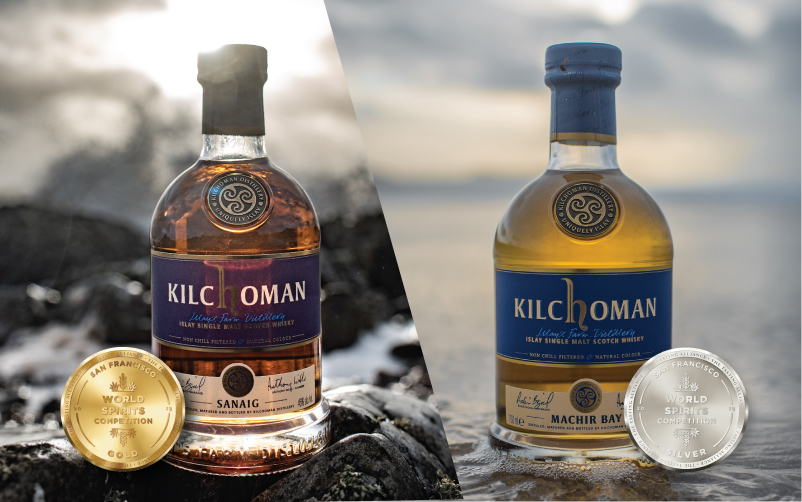
I am always filled with emotion when, travelling abroad for whisky events, I talk with whisky aficionados and tell them I live on Islay. Their eyes light up with envy, it’s like I am telling them I come from Heaven!! The name acts like a magnet, maybe more for people who have never come to Islay. I totally agree with them. I am lucky, I am privileged to have chosen to come and live on this special island. Have I chosen or have I been chosen?
I will never forget my encounter with Islay nearly thirty years ago. I had flown with fellow French journalists to visit Bowmore distillery. I was the last one to leave the plane. As I stepped out, I was immediately shaken from head to toe by a huge shiver. I could not move, it was like I was tetanized, close to fainting. I did not understand what was happening. It was not the cold. We visited in september and the air was fresh and fragrant. I could identify all the smells which came to my nostrils : sheep suint, kerosene, freshly cut grass, some distant floral scents and that strong, heady iodine fragrance brought by the sea breeze. This strange reaction lasted for a few seconds but travelled with me during all my stay. Later I understood what had happened : I was in love. It was love at first nose…
Thirty years later, the magic is still there. No wonder I decided to come and live on Islay eleven years ago. Like many people, if I came to Islay for the whisky, I stayed for other reasons : the beauty of the island and the gentleness of the people.
Smells have always played a major part in my life. Born in Normandy, I grew up in a small village and spent a lot of time in my granny’s kitchen, helping her to prepare the meals and experiencing the mouth-watering smells of the marvels she used to bake. Apple-desserts, warm bread, nutty butter, the complex fragrances of the family calvados (which was “the forbidden fruit” for children and women!)… I can still remember my early training to nosing and tasting.
I left Normandy and came to Paris to study at university. I became a journalist, shifting after a few years from general information to gastronomy. Then I discovered whisky and realized my happy childhood has led me on the spirits path. Passionate about whisky but as much keen on food, I could not abandon one for the other. So I decided to marry them; this is how I became the specialist of food and whisky pairing. I could not have dreamt of a better occupation.
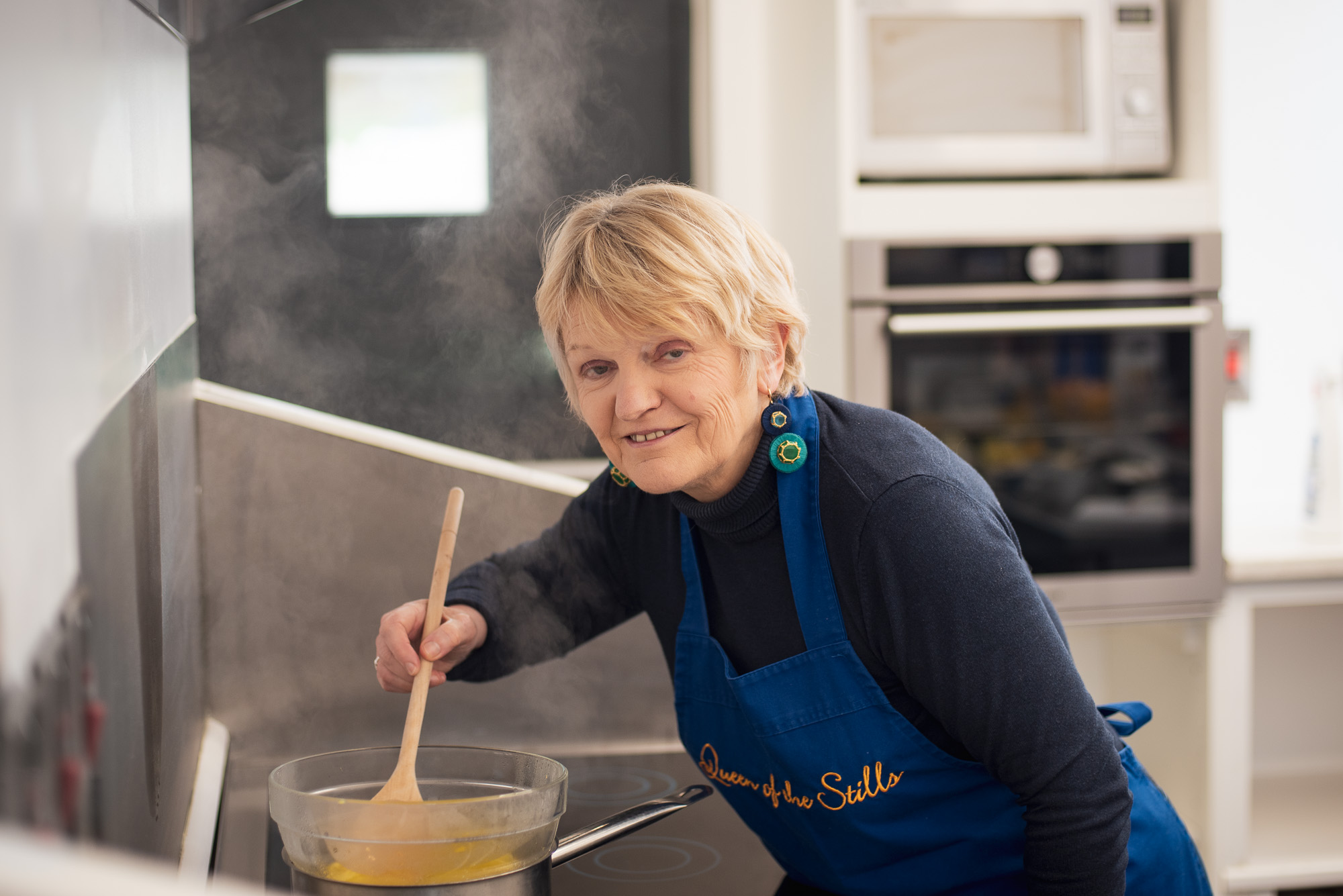
Islay is certainly the most inspiring place to concoct food and whisky combinations. Not only because I have eight distilleries at my doorstep but I am also spoilt with an amazing choice for food : the freshest seafood, from langoustines to scallops, crab and lobster, the tastiest meat – beef, lamb and venison – not to mention the herbs and vegetables from Bridgend Community garden.
These eight distilleries offer a wide kaleidoscope of profiles and flavours which are so intimately linked to the nature of the island. Once again, I have apprehended the whiskies through the fragrances of the island.
The Atlantic winds have carved a unique minerality in Kilchoman whiskies. The smoke is light, slightly sooty and comes from the top of the kiln, not from below. It does not act as a screen but wraps up the fruit and spices.
Pairing whiskies and food take into account that light and refreshing array of aromas. First of all, one might think that a smoky whisky would match with smoked food. It is a mistake, the two smokes clash on the palate. To me, Machir Bay is a Spring-time whisky, evocative of a crisp morning walk on the beach with a distant bonfire. It has a citrussy and floral character, with the smoke wrapping up the fruity notes. A whiff of soot in the back, a fresh minty and aniseed touch. The smoke is light and evanescent. That fresh profile is the perfect companion for seafood : a scallop carpaccio with crunchy vegetables or panfried scallops with a touch of vanilla and a lemon jus; grilled lobster can be enhanced by a ginger and butter sauce. The citrussy desserts offer a marriage in heavens (see the recipe below).
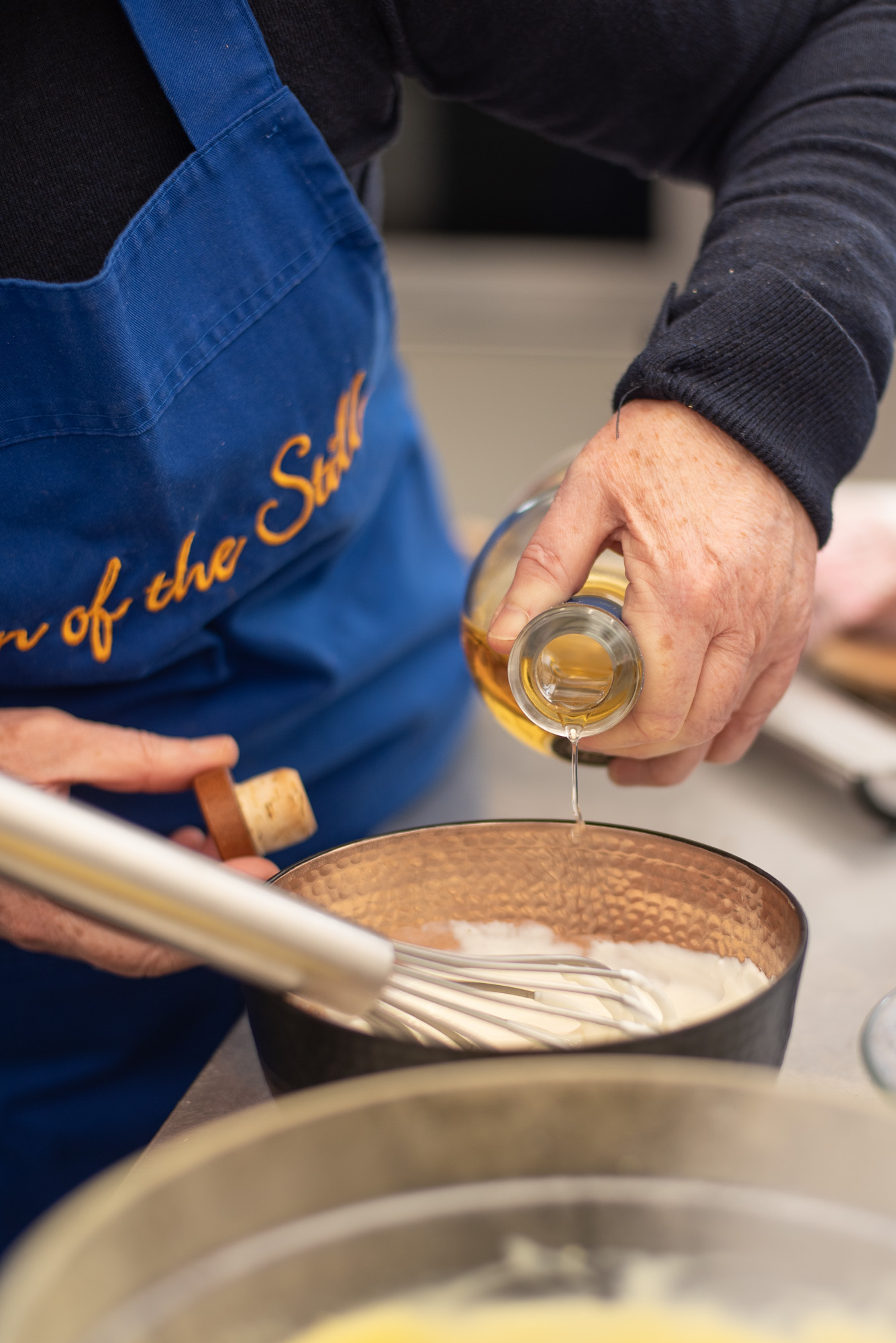
When it comes to cheese, blue cheese mingles with the smoky profile. In my book “à table, whisky from glass to plate”, I suggest Machir Bay for the pear and stilton tart (p 98).
The sherry casks make a strong impact on Sanaig, bringing in a dried fruit sweetness as well as a spicy character. To me Sanaig is evocative of an indoor family gathering in Autumn with granny’s sweets. It releases dried fruit and a touch of molasses while the smoke lingers in the back. Then it brings out bittersweet dark chocolate. Its smooth and velvety texture enhances the sweetness of raisins and date jam. The dry finish reveals an array of soft spices such as nutmeg and cinnamon with a touch of black pepper.
The pairing works in opposition. We need strong flavours to balance the sweetness but a creamy sauce will echo the smooth texture. It may sound unusual to cook beef fillet with grated chocolate. Try it, it is succulent. The chocolate (provided it has a very high percentage of cocoa, 85%, even 99% if you can find it) is used as a spice.
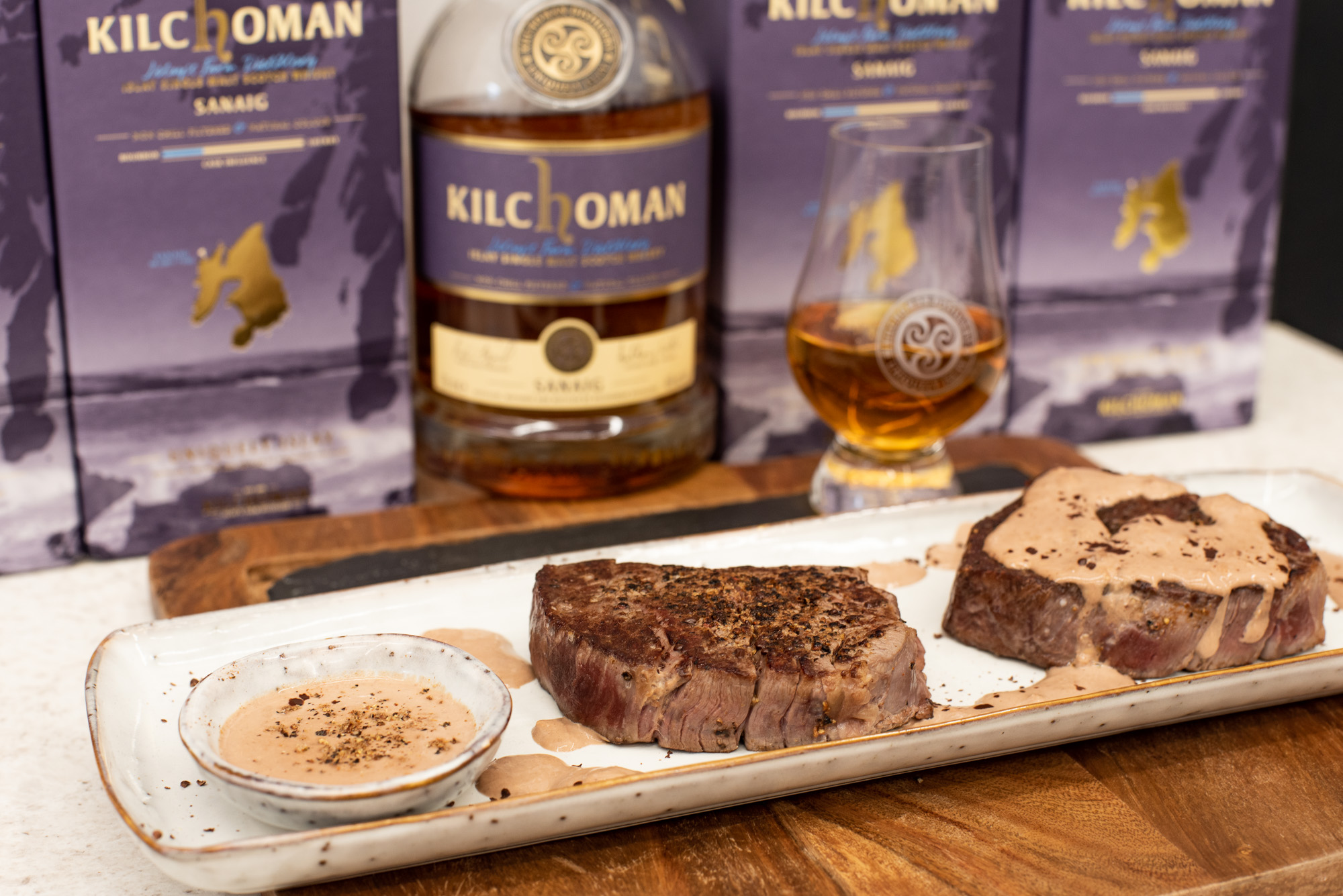
If matched with a sweet, Sanaig will be delicious with a saffron crème brûlée. Again an unsual combination but powerful. Use real saffron of course. And add a plus: mix brown sugar with 1 tbsp of cocoa before caramelizing it.
Both Machir Bay and Sanaig combine well with citrus fruit. I suggest a citrus fruit terrine in my book. Machir Bay will prefer juicy oranges, lemon or tangerine. Sanaig will be matched with some of these fruits but also candied orange and lemon.
So are you ready for a full “Taste of Islay” with a Kilchoman dinner? We are looking forward to hearing about your own experimentations. Please share.
Recipe 1
Deconstructed lemon meringue pie with Machir Bay
This recipe uses all the ingredients of a lemon meringue pie but in an easier and quicker version.
The pairing with Machir Bay (which can be served slightly chilled) offers a refreshing and light combination which enhances the citrussy notes of the whisky. A perfect dessert for a sunny Spring day.
Serves 6
3 lemons (juice and grated zest)
160g caster sugar
85g unsalted butter
3 eggs
10 shortbread biscuits
150g greek yogurt (0% fat)
2 tbsp clear honey
1 big pinch ground pepper
1 tsp lemon zest
6 small meringues
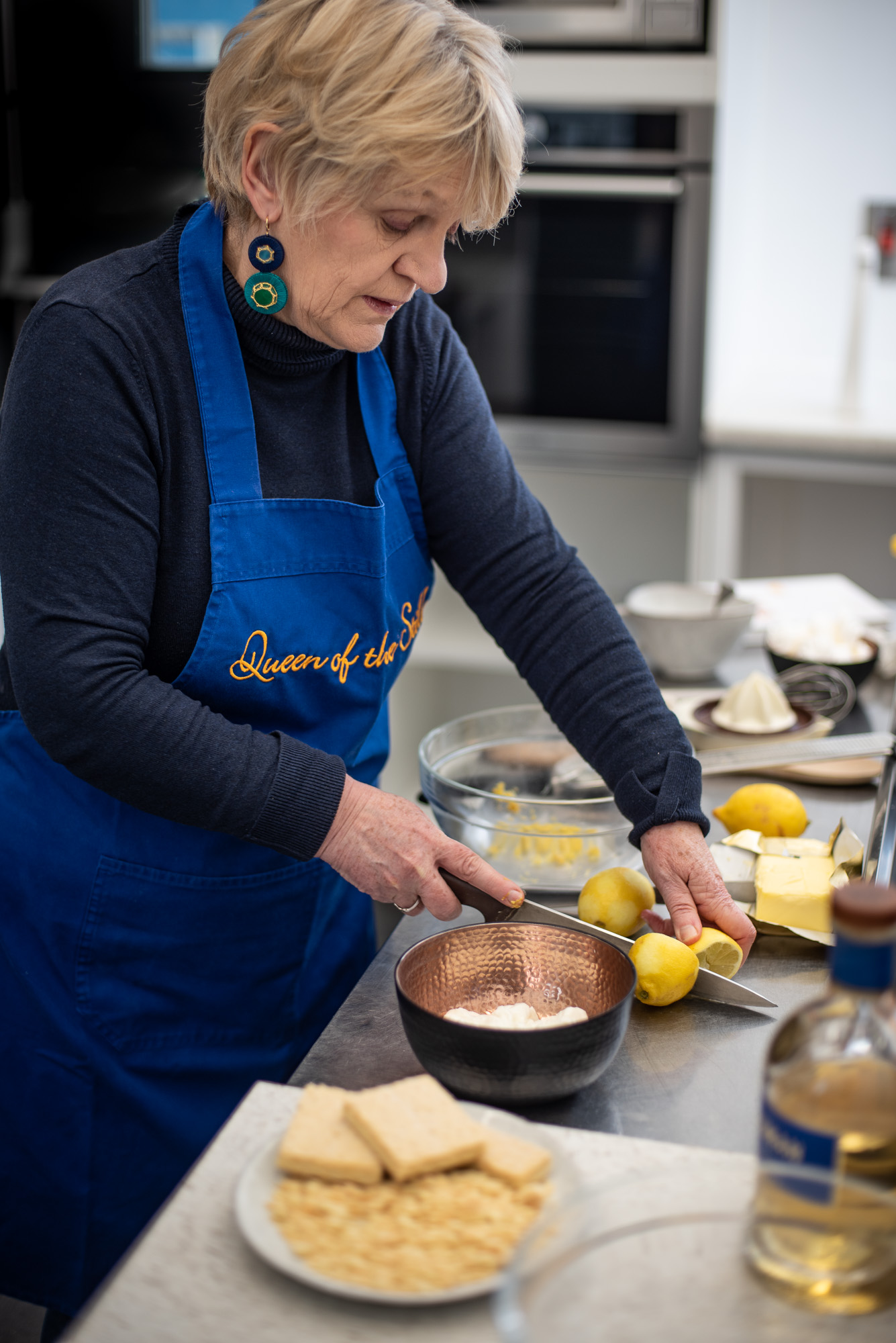
Prepare the lemon curd. Cut the butter into small pieces and put it into a bowl placed over a pan of simmering water (bain-marie). Add the sugar, the lemon juice and grated zest and stir until the sugar and butter are melted.
Whisk the eggs in a bowl and pour into the lemon juice mixture while keeping on whisking. Stir until the preparation thickens (8 to 10 minutes). Remove from the bain-marie and allow to cool for a few minutes.
Crush the shortbread biscuits into rough crumbs. Mix the yogurt with the honey, the pepper and the lemon zest (optional, you can add 2 tbsp of Machir Bay).
In six glasses, place the shortbread crumbs in the bottom, then two spoonfuls of yogurt, top with lemon curd. Keep in the fridge. Before serving, crumble one meringue on the top.
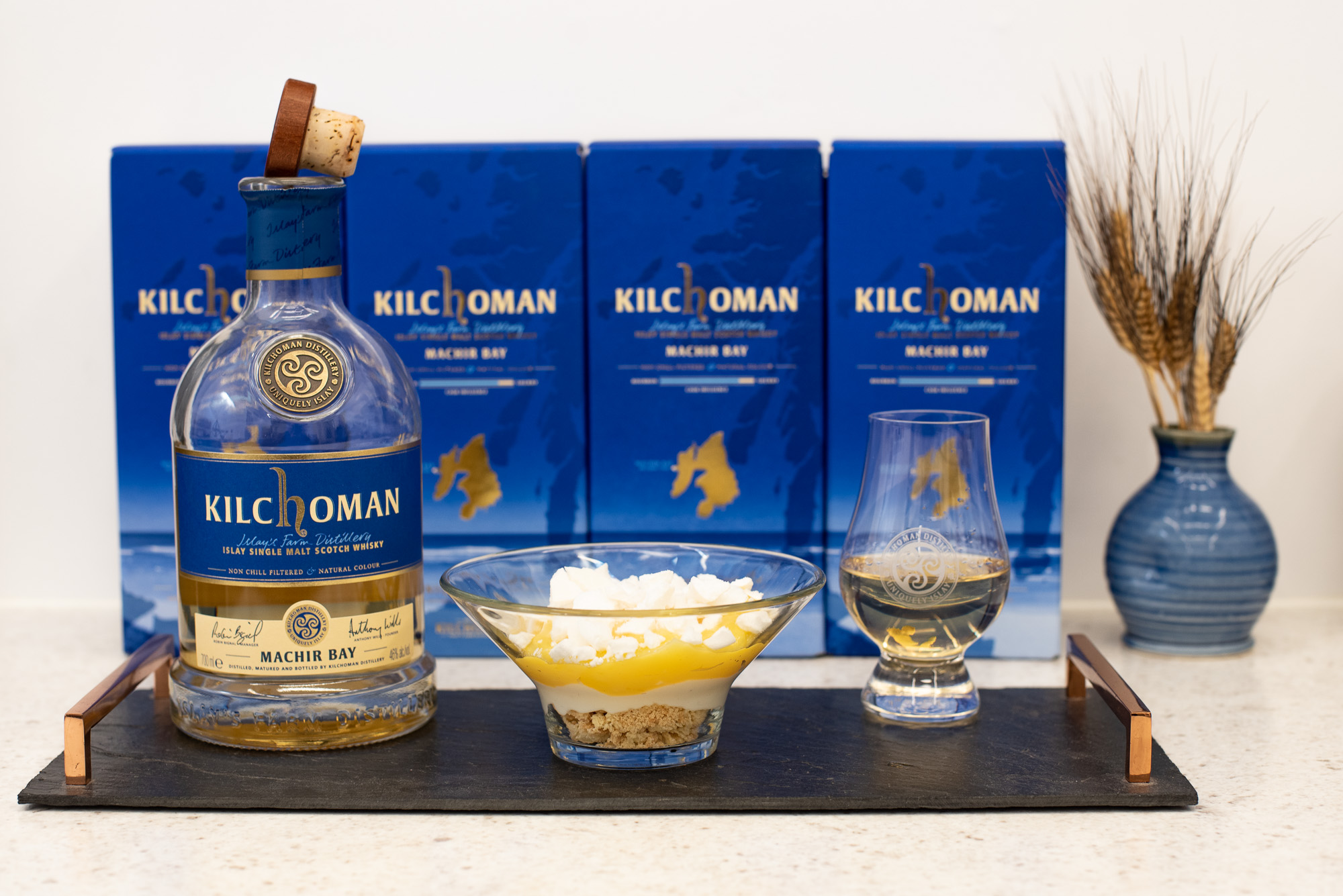
Recipe 2
Steak fillet in a creamy chocolate sauce with Sanaig
There is nothing to beat Islay beef. A succulent well-matured fillet steak will find a perfect match with the sherried profile of Sanaig. Tender and mouth melting, it reminds of the whisky smooth texture. The addition of grated dark chocolate surprises the tastebuds. The spices of the creamy sauce give a kick to the whisky and balance its sweetness. A gratin dauphinois and a few greens – the healthy touch! – will complement the dish.
Serves 6
6 steak fillets (130g each, thick cut if possible)
120 g dark chocolate (the darkest possible up to 85% cocoa or more), grated
Mixed spices : ground black pepper, a good pinch of chili, grated long peppercorns
fleur de sel
1 tbsp olive oil
30g butter
25cl double cream
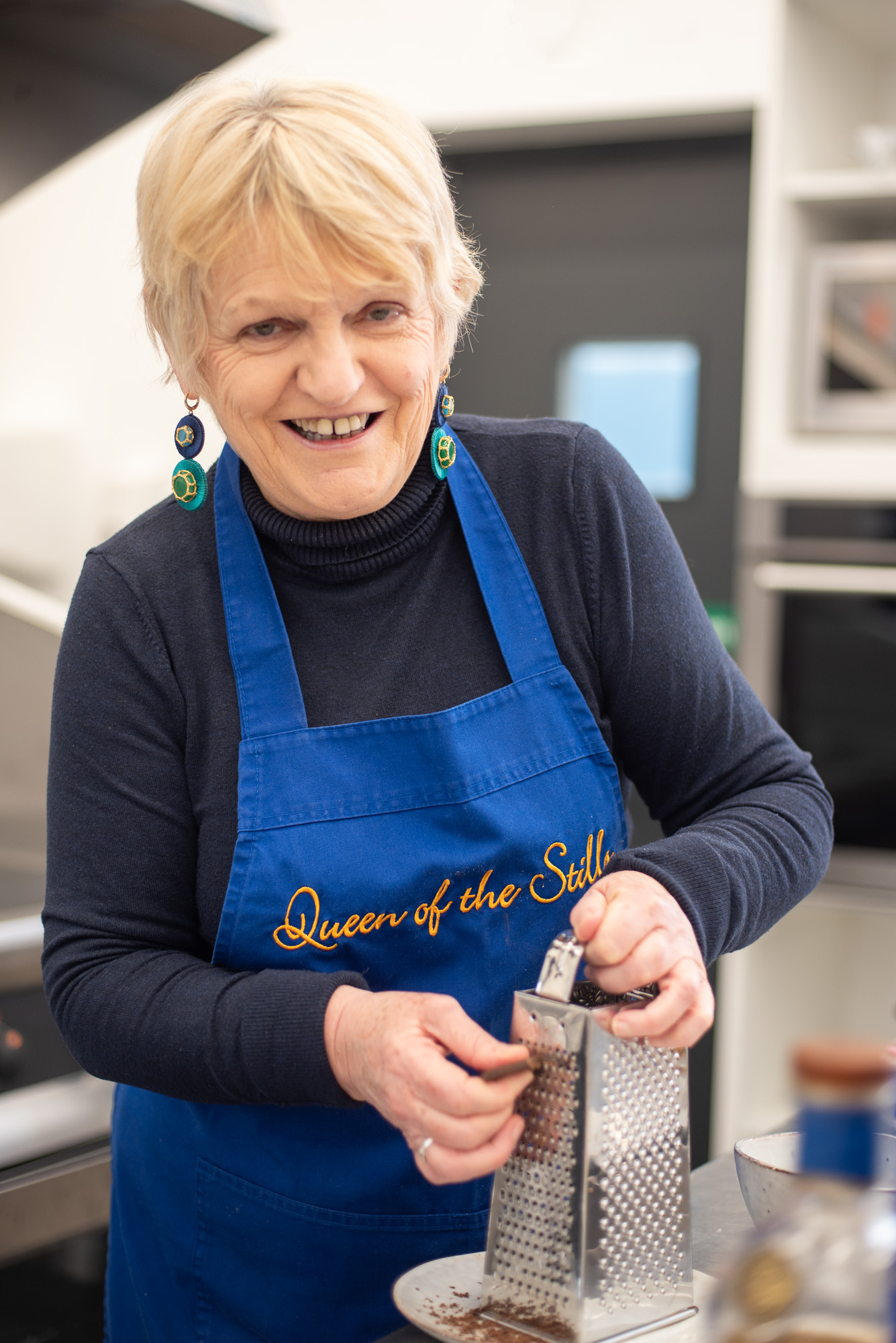
Warm a frying pan, add oil and butter. Sizzle the steaks on a high heat then turn the heat down a little. Cook the steaks accordingly to the doneness you want (rare, medium, well-cooked). Keep them on a warm dish. Deglaze the pan with the cream, add the spices and half the grated chocolate. Stir until the chcolate is melted. Pour over the fillets. Sprinkle the rest of the grated chocolate on the steaks.
Serve with a gratin dauphinois, sauteed mushrooms and steamed French beans.
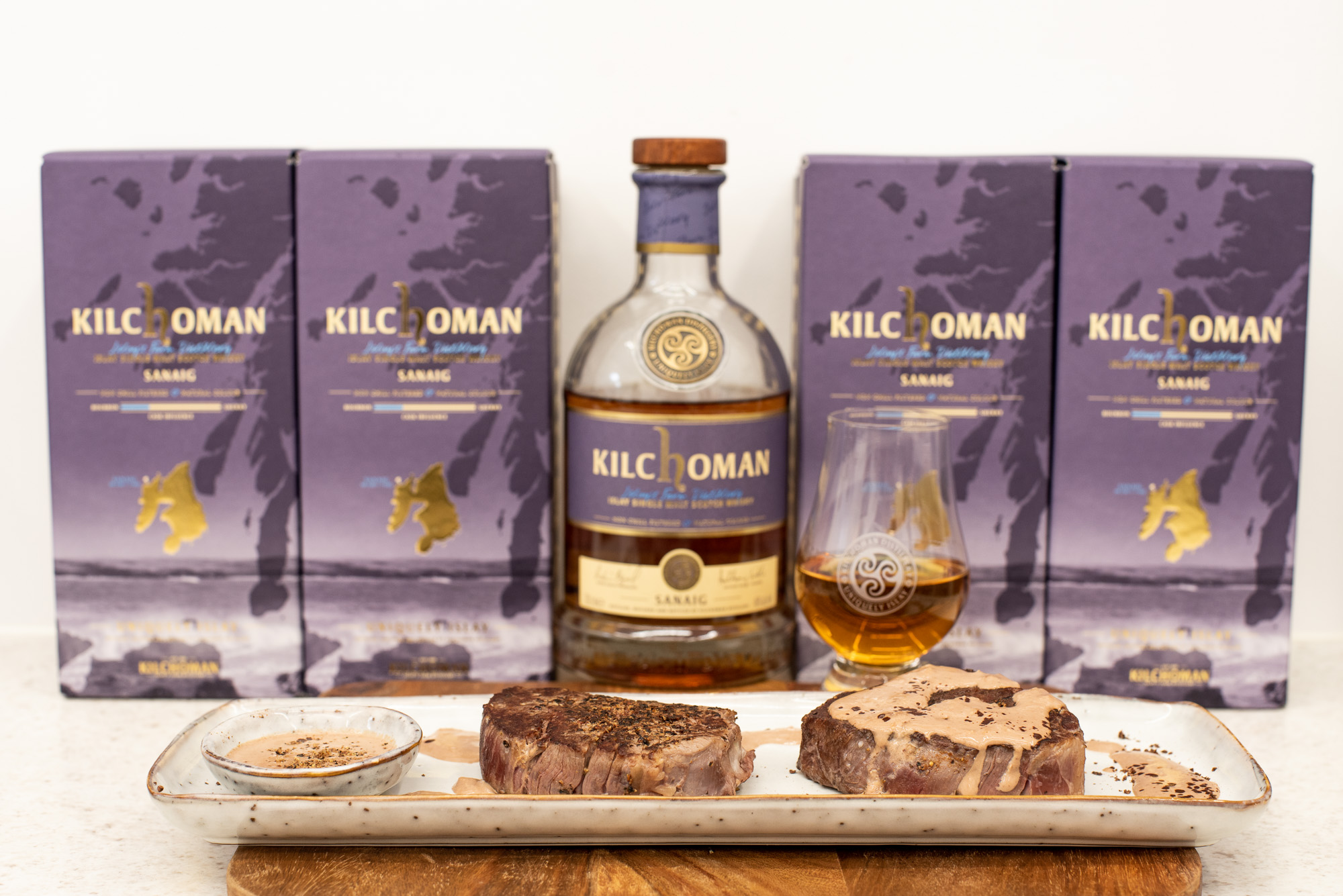
Every year the Whisky Advocate Buying Guide reviewers collectively sample hundreds of whiskies, including rare and extremely limited releases. A blind tasting review takes place where a panel of international reviewers will taste many whiskies in a series of blind tasting flights to arrive at the final list, of which Loch Gorm is named ‘number 15’.
‘To determine our Top 20, we begin by looking only at whiskies that rated “outstanding” (90 points or higher on Whisky Advocate’s 100-point scale)… Each of these whiskies generates excitement and marks a highlight across a year of tasting’.
Discover more about Loch Gorm. To see the Whisky Advocate Top 20 of 2018.
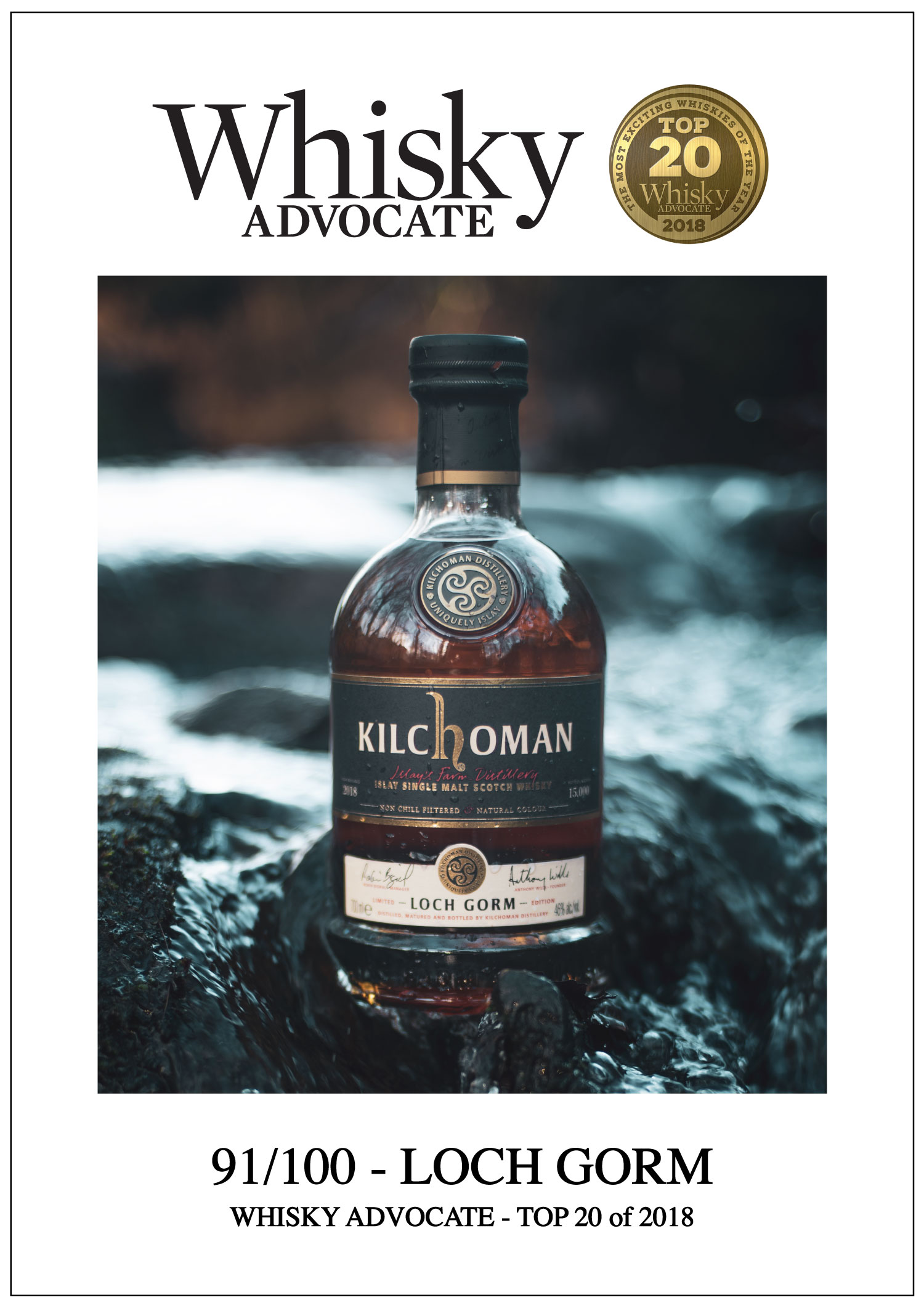
“Fresh, structured and excellent to the palate.”
The Sauternes Finish, has been awarded the Best Whisky of 2018 by CigarLover Magazine after scoring an amazing 92 points in a blind tasting competing with over 200 whiskies from around the world!
The Sauternes Finish is a limited edition release of only 10,000 bottles from 30 casks. It was initially matured in ex-bourbon barrels before being transferred into fresh Sauternes hogsheads for five months prior to bottling.
Described by CigarLover’s tasting panel as “Intense, structured and harmonious. The deep aroma of the peat is refreshed by citrus, giving rise to an excellent aromatic bouquet.”
The Sauternes Finish was followed by a 27 year old 1990 GlenDronach in second place and Kavalan’s Solist Fino Sherry Cask came third. The whiskies were ranked independently taking into consideration all the products, without differences inherent in the country of origin. Click here for the full top 10 list of the 2018 whisky results.
CigarsLover Magazine is the No.1 cigar publication in Europe, with readers from all over the world. The 2018 Best Whisky awards is their first of many to come, having traditionally celebrated cigars. Click here to read the whole issue and find the Best Cigar of 2018 to go with a dram of the Sauternes Finish.
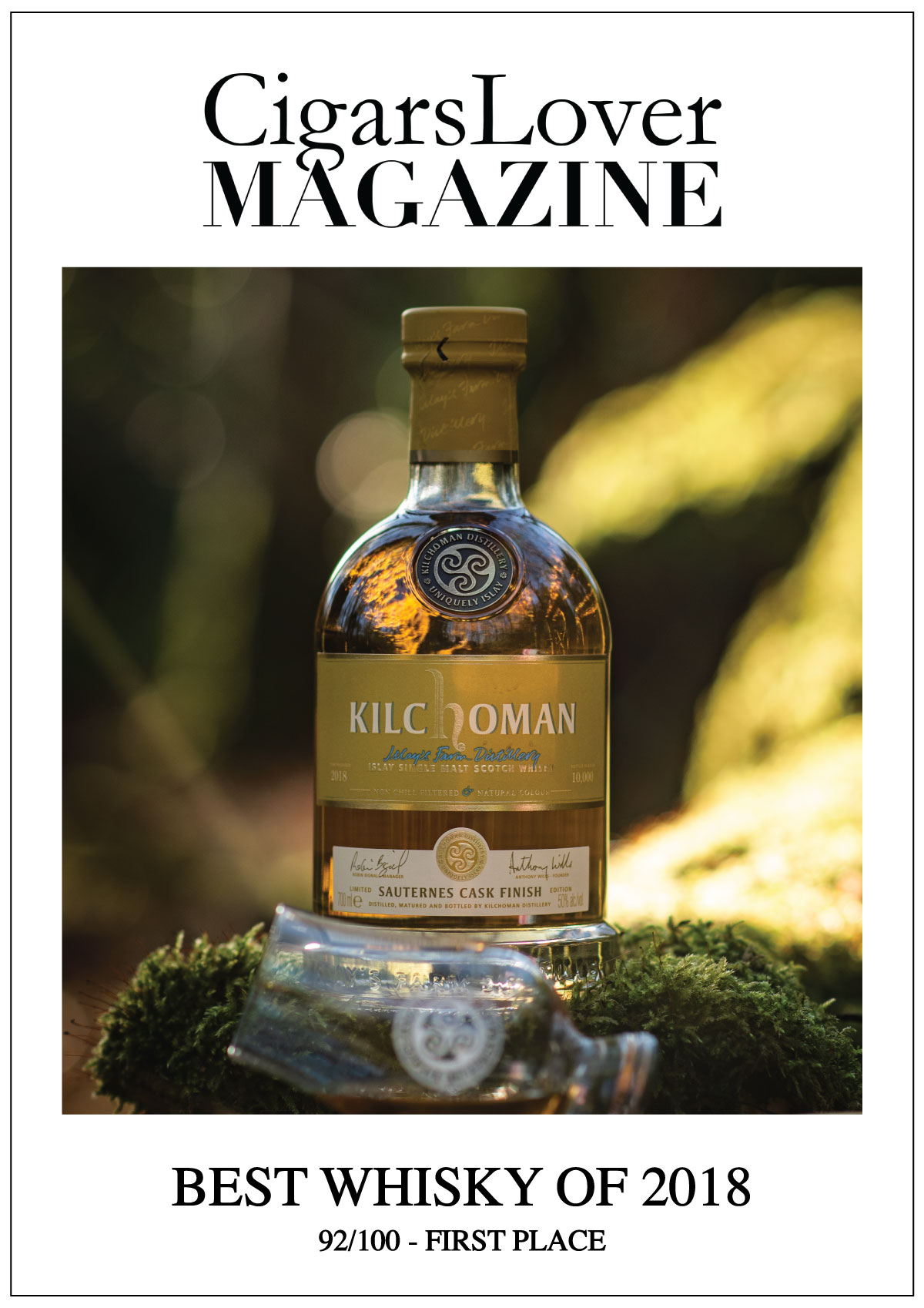
Kilchoman Distillery has a unique story, founded in 2005, it was the first distillery to be built on Islay in over 124 years and the only farm distillery on the island. Known for our traditional approach to whisky making, from barley to bottle, there are many questions that come our way, however there is one question that is asked so often – ‘how did you do it?’. So, I decided to have a chat with the man who knows exactly how it was done, Anthony Wills – Managing Director and Founder of Kilchoman Distillery, who turned many whisky drinkers dreams into a reality…
The Beginning
Anthony Wills has worked in the drinks industry for 40 years, over 20 of which have been spent plying his trade in the single malt whisky industry. Before dreams of Kilchoman were flowing through Anthony’s mind, he entered the whisky industry as an Independent bottler in the mid 1990’s, bottling casks from many of Scotland’s fine distilleries, learning his craft in wood management and cask maturation, something very important to Kilchoman today.
As a relative newcomer to the world of independent bottling in the early 2000’s, Anthony was unable to source many of the high-quality casks he was searching for. As the demand and intrigue at the premium end of the market was starting to grow, a lot of the distilleries he worked with began to hold onto their stock rather than releasing it into the open market. This is when the seed was first planted in Anthony’s mind, if he couldn’t get his hands on the whisky he was searching for, then he would go ahead and make it himself!
The Idea
With the idea of making his own single malt whisky now firmly locked in his mind, the long journey to establishing Kilchoman Distillery began. Anthony understood the market by now and knew there was a thirst for something different, an opening for a new distillery, although many questions were still unanswered; The location, the style, the size, and of course, to raise the funds to build this new distillery. “There was no doubt that I had the confidence I could take a new single malt to market, there was a demand out there for a premium non-aged single malt but getting there was a hugely difficult task. The finance alone was daunting, not really being able to know for sure how much we needed… Most people thought I was completely mad!”
Anthony had always felt there had to be a point of difference, a unique way of producing a whisky like no other. “There was no point in building a distillery like every other in Scotland… and I had always been fascinated by the history of farm distilling in Scotland”. From this came the long planning and building of Islay’s only farm distillery, where barley could be grown and the whole whisky-making process could be shown on one site. “To me, that is what Kilchoman is all about, we are telling a completely different story to the mainstream distillery’s, something special”.
The Location
To many outside the whisky industry it’s a mystery how a small island on the west coast of Scotland has so many distilleries famous throughout the world. Islay is an iconic brand for single malt whisky, with the island’s reputation and the family’s historic connection to the island (a story for another time), it was the obvious choice for Anthony and his family to locate the distillery on Islay, a decision he is still very thankful for today. “There is no doubt in my mind that the single most important decision we took was to locate the distillery here because of Islay’s unique brand image around the world”.
It was then time for the next big decision – where on the island to build this distillery? Knowing Islay well already, it soon became clear there was only one place suited for this farm distillery. 5 miles down a single-track road you reach a small farm yard, nestled below the cliffs, surrounded by some of the most fertile land on Islay and the historic Kilchoman church just next door. “We knew we could grow good quality malting barley from these fields.”
Changes over time
Fast forward 13 years and Kilchoman is thriving, the distillery is currently expanding to allow for an increase in production to satisfy demand. “Where we are now is unbelievable, I would never have imagined we would ever have been where we are now – I just had an idea that this type of distillery would have an appeal with a wider audience around the world; a small bespoke, farm, family run distillery had a place in the market”.
The industry has changed hugely in recent years, 25 years ago, only 3-4% of all scotch whisky (blends included) sold around the world was single malt, now it’s over 10%, which is a huge increase. “timing in this world is everything and we got that absolutely spot on in terms of the market and enthusiasm for experimentation in single malt”.
Kilchoman Distillery may have struggled to survive 20 – 25 years ago, there wasn’t the same enthusiasm for a non-aged single malt or a new brand that there is today. Three, four, five-year-old whisky was not being released and would have been branded ridiculous to do so. However, as a distillery (we like to think) we have proved this can be done and does work. “The spirit character and the whisky character has been very well received and people’s first thoughts are often that it’s character is older than it really is.”
No one could have predicted that the single malt whisky market would be where it is now, “the advent of all these new distilleries is extraordinary, not only in Scotland but all over the world.”
The future for Kilchoman…
Now established for over 13 years, the decision was made to double production to allow the distillery to satisfy demand around the world. This was a big decision to make and necessary to avoid running out of stock in four- or five-years’ time. Anthony may have had to start limiting all Kilchoman releases and this was something he didn’t want to happen. “This [the expansion] will provide us with plenty of whisky going forward, we can carry on growing the brand and hopefully build a successful single malt whisky. That is what’s driving me forward, having my boys in the business means that I am more driven to take Kilchoman to the next level”.
“There is no doubt we have a lot of confidence that we can keep building significantly on the success we have already – we can continue this journey and grow the brand around the world, we have people here that can make that happen and I believe we have a very bright future”(Anthony Wills, MD and founder of Kilchoman, January 2019)
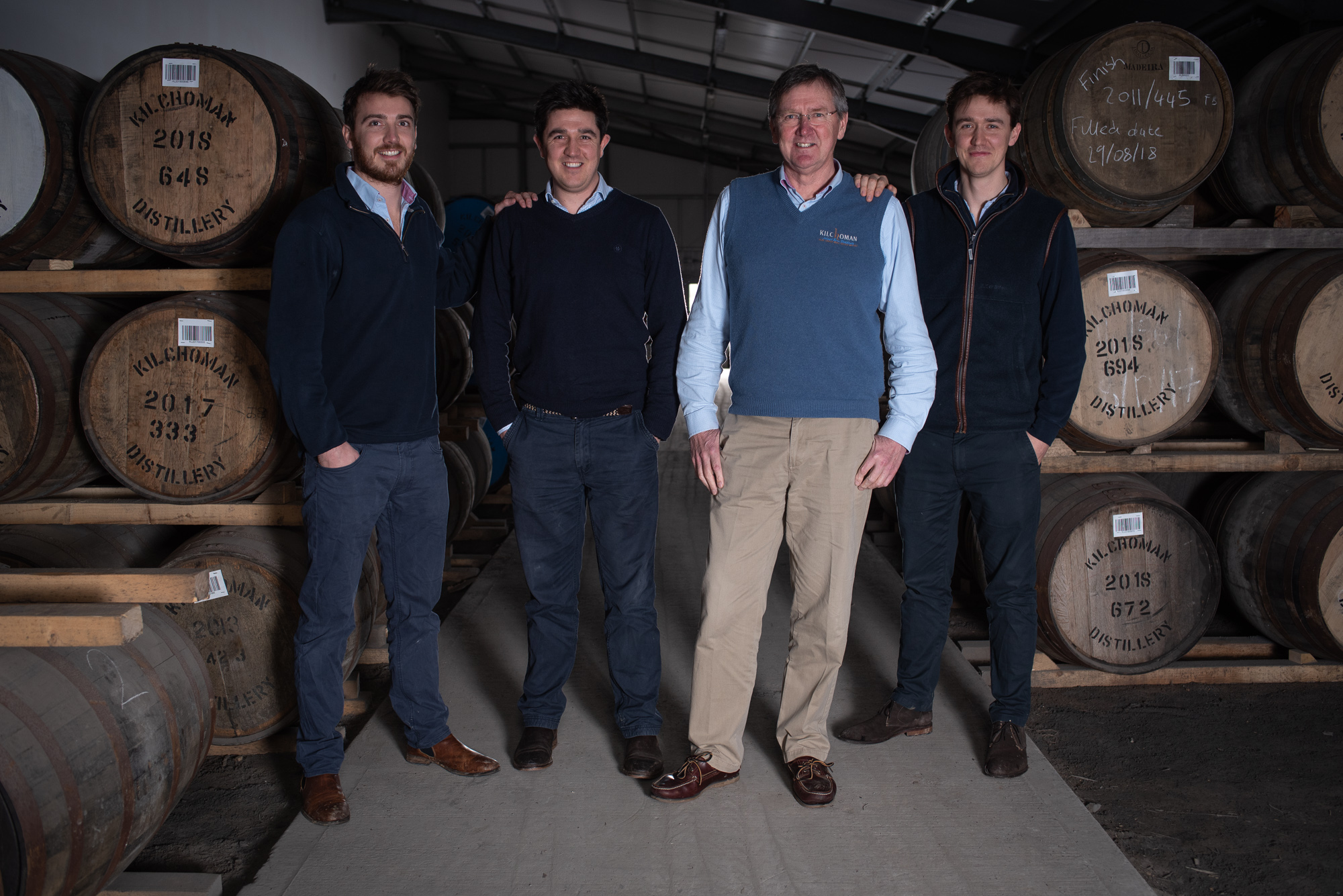
Here’s my take on our core expressions, each typically consumed in a weighty tumbler with a drop of water. This is my first ‘blog post’ and I was never much of an academic so bear with me…
Machir Bay
The mainstay of the Kilchoman range. In my view Machir Bay is everything that a bold Islay whisky should be, smoky and intense, it gives you a little punch in the gullet whenever you take a sip just to remind you that you’re not swilling any old dram. The balance of casks, mostly ex-bourbon barrels, allows the Kilchoman spirit to shine through, the earthiness and maritime character marrying with citrus sweetness and tropical fruit then layers of caramel, vanilla and butterscotch. For all sorts of reasons, Machir Bay is the Kilchoman expression I’m drinking 9 times out of 10. It embodies Kilchoman, Islay and the uniqueness of our whisky.
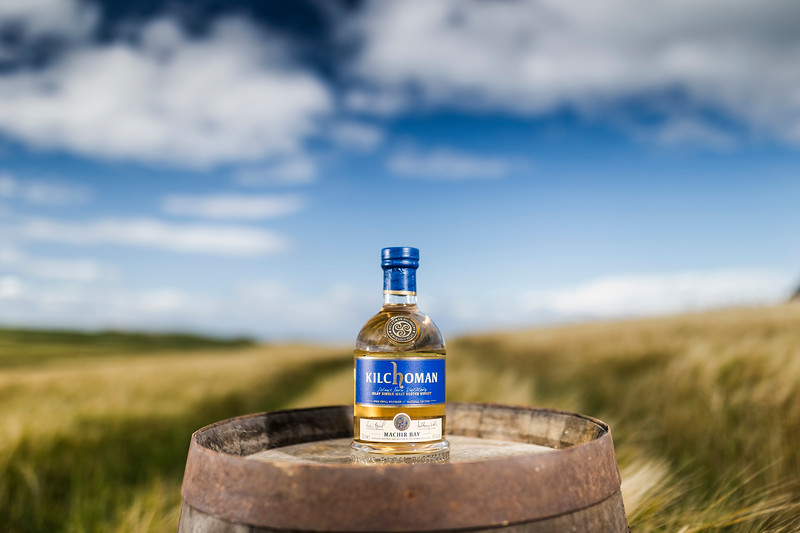
Sanaig
If Machir Bay were a weathered Islay hill farmer, Sanaig would be a tweed coated country gent. It’s high proportion of sherry cask maturation creates a darker colour and richer full-bodied flavour, Sanaig remains routed in Islay character but has a softer, more rounded feel. The citrus flavours of Machir Bay have been overlaid with notes plums, stewed sultanas and honey. There are hints of cinnamon and dark chocolate and the peat smoke develops in waves as the intensity builds and recedes. When the situation demands a refined dram, Sanaig is my go-to Kilchoman. Normally after dinner with a short speech to those in attendance… even if no-one’s listening.
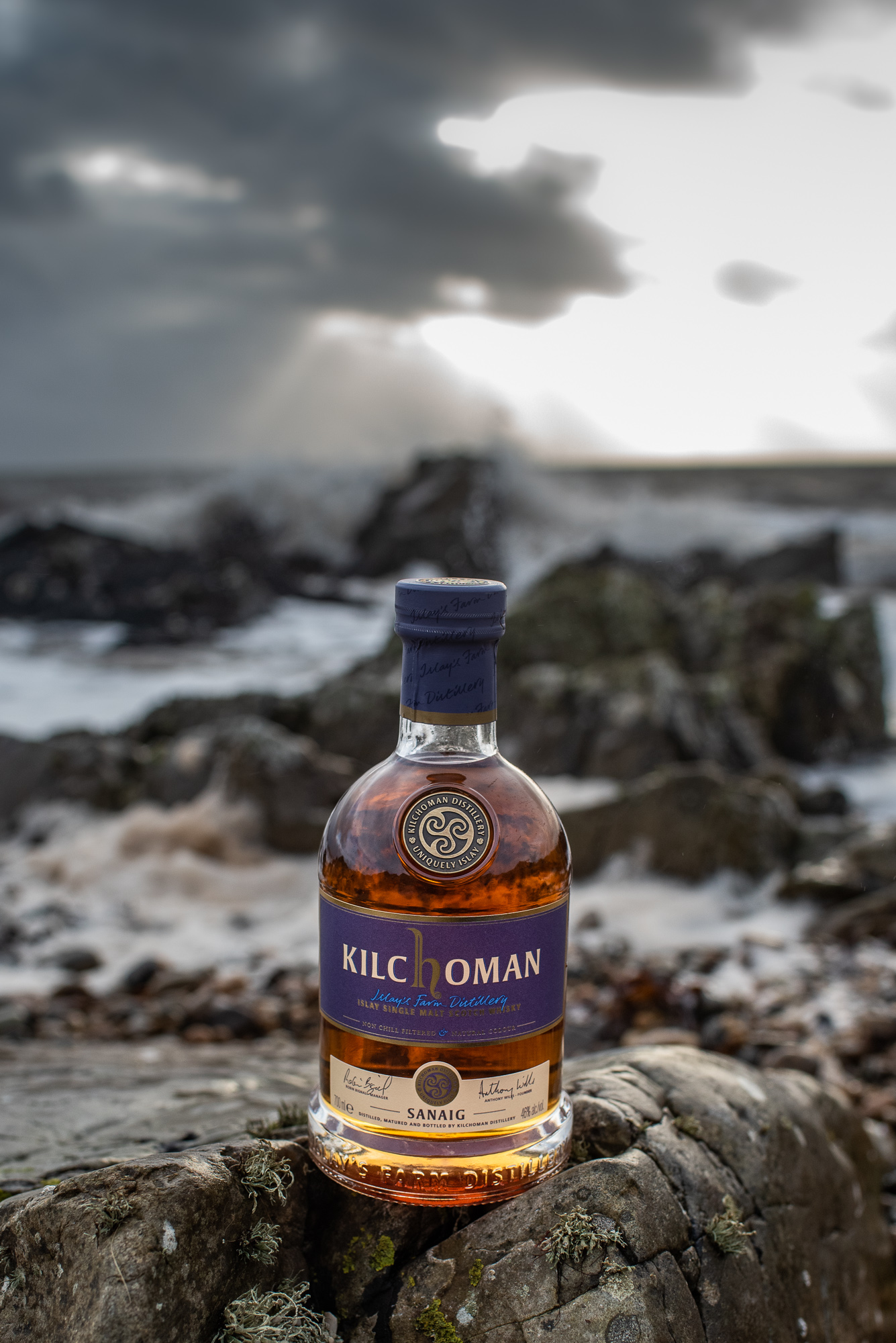
Loch Gorm
The early Loch Gorm releases were big rich brutes; young and confident with explosive palates of dried fruit and intense peat smoke. Latterly, particularly this year’s expression, 10 and 11 year old casks have counterbalanced the innate boldness with light fruitiness, cherries, blackberries and citrus to create a more mature and balanced older brother compared to the young runaways of 2013/14. The six editions of Loch Gorm dating back to 2013 are akin to siblings (me and my brothers perhaps), there are many similarities, but each have their own individual quirks. I’m usually quite greedy with my Loch Gorm, Peter, my younger brother, might drink a bottle in one sitting, George (older brother) would prefer to gaze at a pristine untouched bottle perched on the top shelf… my approach is probably somewhere in the middle.
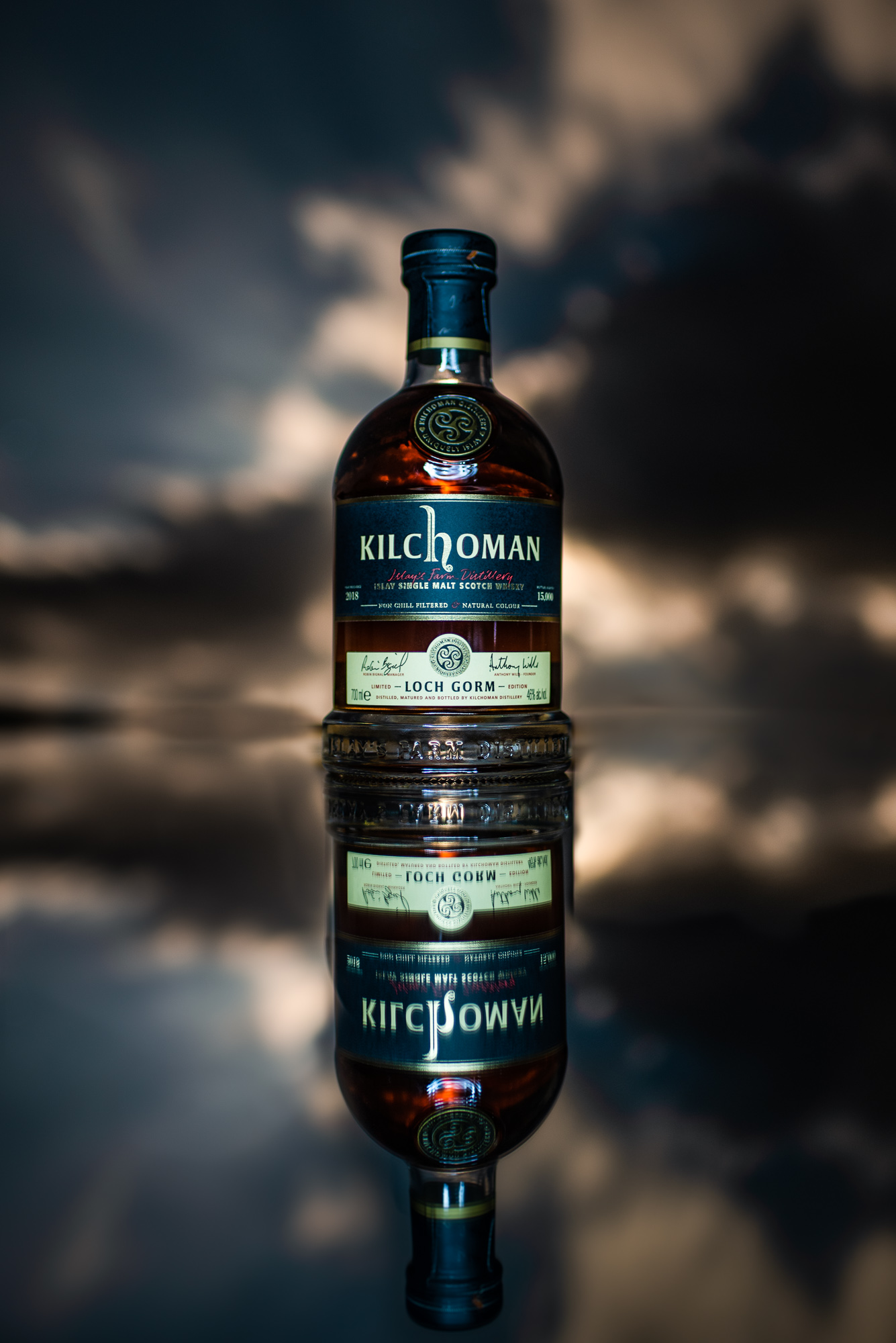
100% Islay
Prior to this year’s release (the 8th Edition) the 100% Islays have all been exclusively bourbon barrel matured, they’ve always had a beautiful elegance to them, almost perfumed, with loads of butterscotch, floral sweetness and a distinct freshness. This year we changed things up a bit by adding a good portion of sherry casks to the vatting, this has added a depth and fruitiness to the whisky without overpowering the elegance that characterises it. The 100% Islays are top of my list if I’m looking to impress, my trump card in the whisky stakes. No matter what edition I am sipping on, it always conjures up memories of shovelling barley on the malt floor during school holidays, not quite understanding what I was doing!
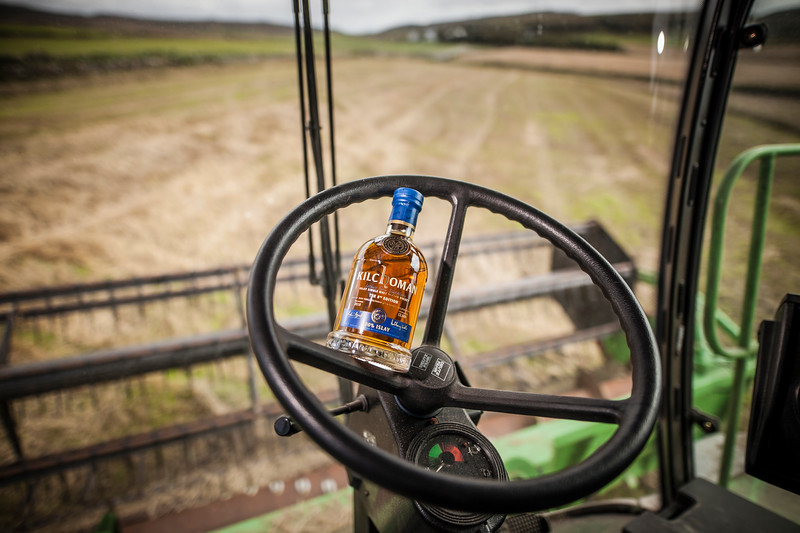
No matter the situation, mood or company I always manage to get my hands on a Kilchoman that fits the bill. You can explore our range for yourself here and I’d recommend dropping by your local whisky bar or shop and trying them for yourself.

